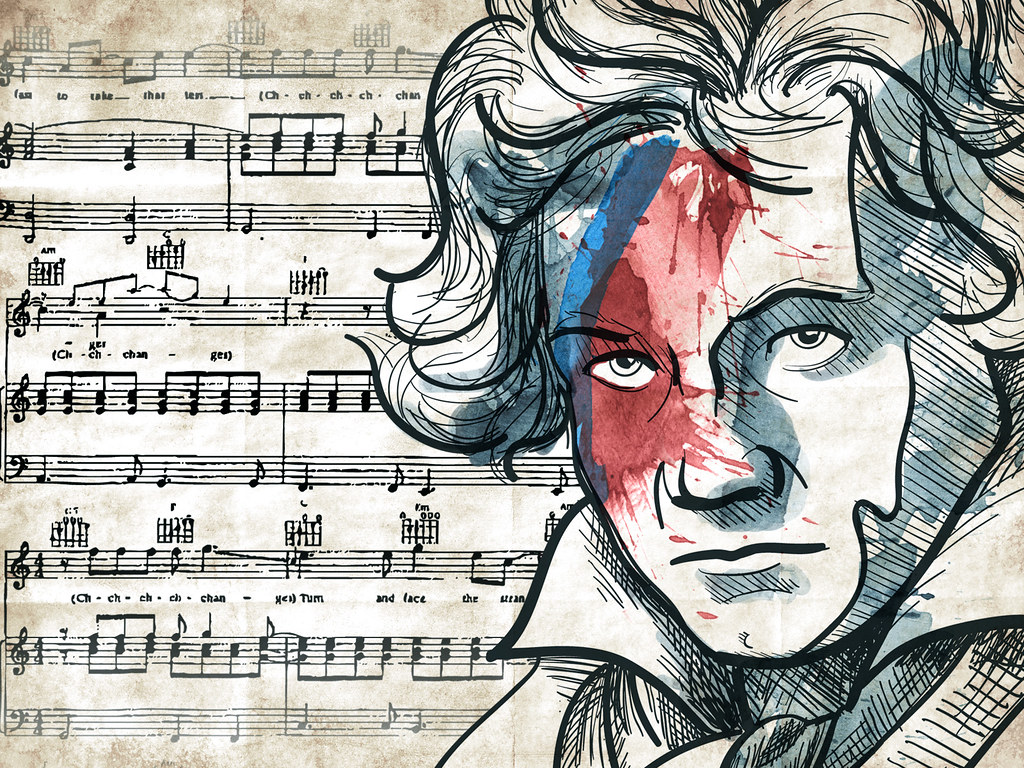Welcome to our journey into the story of one of the most beloved compositions of all time: Beethoven’s Moonlight Sonata. This masterpiece, with its haunting melody and emotional depth, continues to capture the hearts of listeners worldwide, centuries after its creation. Join us as we explore the history, inspiration, and legacy of this iconic piece.
Ludwig van Beethoven: A Musical Genius
Born in Bonn, Germany, in 1770, Ludwig van Beethoven was a musical genius whose compositions bridged the Classical and Romantic eras. Known for his intense passion and groundbreaking approach to music, Beethoven was a revolutionary force. Despite his battle with hearing loss, which began in his late 20s and ultimately left him nearly deaf, Beethoven’s music remained deeply expressive, conveying the turmoil and triumph of the human spirit. Among his numerous compositions, the Moonlight Sonata remains a testament to his emotional depth and profound artistry.
The Creation of the Moonlight Sonata
The Moonlight Sonata was composed in 1801, at a time when Beethoven was grappling with his deteriorating hearing. Officially named Piano Sonata No. 14 in C-sharp minor, Op. 27, No. 2, Beethoven himself didn’t name it “Moonlight Sonata” – this title was added much later. The sonata is dedicated to one of his pupils, Countess Giulietta Guicciardi, a young aristocrat with whom Beethoven was reportedly infatuated. Though their love was not to be, Beethoven’s feelings are often thought to have influenced the piece’s emotional intensity.
The Meaning Behind the Name “Moonlight”
The name Moonlight Sonata was coined by the German music critic and poet Ludwig Rellstab five years after Beethoven’s death. Rellstab famously described the sonata’s first movement as being reminiscent of “moonlight shining on Lake Lucerne.” This imagery quickly captured public imagination and became widely accepted, solidifying the association between Beethoven’s sonata and a tranquil, moonlit night. The nickname, although not Beethoven’s own, perfectly encapsulates the meditative beauty and otherworldly feeling of the piece.
The Structure and Mood of the Sonata
The Moonlight Sonata is structured into three distinct movements, each evoking a unique atmosphere:
- First Movement: Adagio sostenuto
The first movement is soft, haunting, and introspective. Its flowing, arpeggiated accompaniment, played almost entirely pianissimo, creates a sense of stillness and contemplation. The melody, subdued and mournful, has an almost hypnotic quality, as if lost in deep thought. This movement captures the essence of melancholy and sets a deeply emotional tone for the entire piece. - Second Movement: Allegretto
The second movement is a lighter, contrasting interlude that offers a gentle release from the weight of the first. It has a dance-like quality, combining elements of both a minuet and a scherzo. While brief, this movement provides a moment of grace, lifting the listener into a brighter, more playful space. - Third Movement: Presto agitato
The third movement is a dramatic, fiery finale that bursts forth with intensity. It is technically challenging, demanding both precision and passion from the performer. This movement showcases Beethoven’s genius in capturing both rage and brilliance, as if echoing the composer’s inner turmoil. The rapid, stormy progression brings the sonata to a powerful close, contrasting sharply with the serene, ethereal beauty of the first movement.
Legacy and Influence
The Moonlight Sonata has become a cornerstone of Western classical music and is one of Beethoven’s most celebrated works. Its universal appeal has made it an inspiration to artists, musicians, and composers across generations. It has been referenced in literature, cinema, and pop culture, symbolizing everything from unrequited love to the mystery of the night.
Beethoven’s sonata is a reminder of his extraordinary ability to express profound emotion through music. It is a testament to the resilience of the human spirit, crafted by a composer who refused to let his struggles define him. Instead, Beethoven channeled his emotions into works that continue to resonate with audiences worldwide.
Explore Moonlight Sonata for Yourself
If you haven’t yet experienced the Moonlight Sonata, take a moment to listen. Find a quiet space, and let the music transport you to another realm. Feel the melancholy of the first movement, the gentle dance of the second, and the storm of the third. Beethoven’s masterpiece is more than just music—it’s a journey through love, loss, and passion.


Comments are closed